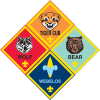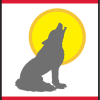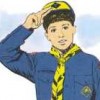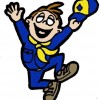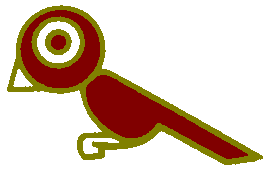 If you like watching wildlife, you’re already a naturalist. A naturalist studies living creatures and plants in the wild. When you visit a nature center to learn about birds, reptiles, mammals, trees, and wildflowers, your guide is a naturalist.
If you like watching wildlife, you’re already a naturalist. A naturalist studies living creatures and plants in the wild. When you visit a nature center to learn about birds, reptiles, mammals, trees, and wildflowers, your guide is a naturalist.
For this activity badge, you might keep an insect zoo, watch tadpoles change into frogs, or make a terrarium for wild plants. Perhaps your den will visit a real zoo or take a nature walk in the woods.
Naturalists have a great love for nature. They notice details that other people miss. They know that the well-being of all living things is interconnected.
Requirements
Do this:
1. With your parent, guardian, or Webelos den leader, complete the Respect Character Connection.
a. Know: Tell what interested you most when completing the requirements for this activity badge. Tell what you learned about how you can show appreciation and respect for wildlife.
b. Commit: Tell things some people have done that show a lack of respect for wildlife. Name ways you will show respect for and protect wildlife.
c. Practice: Explain how completing the requirements for this activity badge gives you the opportunity to show respect.
And do five of these:
2. Keep an “insect zoo” that you have collected. You might have crickets, ants, or grasshoppers. Study them for a while and then release them. Share your experience with your Webelos den.
3. Set up an aquarium or terrarium. Keep it for at least a month. Share your experience with your Webelos den by showing them photos or drawings of your project, or having them visit to see your project.
4. Visit a museum of natural history, a nature center, or a zoo with your family, Webelos den, or pack. Tell what you saw.
5. Watch for birds in your yard, neighborhood, or town for one week. Identify the birds you see and write down where and when you saw them.
6. Learn about the bird flyways closest to your home. Find out which birds use these flyways.
7. Learn to identify poisonous plants and venomous reptiles found in your area.
8. Watch six wild animals (snakes, turtles, fish, birds, or mammals) in the wild. Describe the kind of place (forest, field, marsh, yard, or park) where you saw them. Tell what they were doing.
9. Give examples of
• A producer, a consumer, and a decomposer in the food chain of an ecosystem
• One way humans have changed the balance of nature
• How you can help protect the balance of nature
10. Identify a plant, bird, or wild animal that is found only in your area of the country. Tell why it survives only in your area.
11. Learn about aquatic ecosystems and wetlands in your area. Discuss with your Webelos den leader or activity badge counselor the important role aquatic ecosystems and wetlands play in supporting lifecycles of wildlife and humans.
12. Look around your neighborhood and identify how litter might be dangerous to the birds and other animals. Clean up the litter. Identify what else you might do to make your neighborhood safer for animals.
13. While you are a Webelos Scout, earn the Cub Scout Academics belt loop for Wildlife Conservation.

